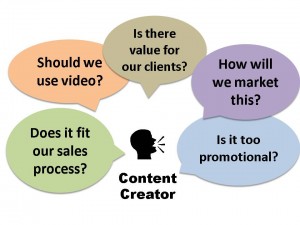 Case studies, corporate videos, byline articles, seminars and more. These are examples of informational content that PR and marketing professionals have been producing for decades as part of the classic marketing mix. In recent years, interest has grown in B2B content marketing, mostly fuelled by the Internet and social media’s voracity for new, engaging content to drive community engagement.
Case studies, corporate videos, byline articles, seminars and more. These are examples of informational content that PR and marketing professionals have been producing for decades as part of the classic marketing mix. In recent years, interest has grown in B2B content marketing, mostly fuelled by the Internet and social media’s voracity for new, engaging content to drive community engagement.
To be effective, content needs to serve two purposes:
1. As a tool, it must deliver against company business objectives
2. It needs to be relevant to the intended audience
Producing original content is an effective way to help establish your company as the preferred market choice. Unique content helps build credibility by showcasing your company’s thought leadership on key industry issues. Original B2B content can take on a variety of forms: videos, white papers (an overused and abused tool in my opinion), byline articles in industry publications, seminars and webinars, speaking engagements…and the list goes on.
Content Marketing Basics:
Authenticity: The language you use will either attract or alienate your audience. Ensure that it’s straightforward and representative of your industry. Although your industry may be full of jargon and well known abbreviations, try to simplify your content so that it can be understood by anyone in the demand chain – from end-user to manager to procurement officers.
Credible Voice: To be credible, B2B content shouldn’t be promotional in nature. Avoid being ‘salesy’ – you want to share unique perspectives, innovative solutions and new insights with your audience, not sell them products.
Repurpose Content: Repurpose content whenever possible into web content. For instance, a speaking engagement can be videotaped and segmented into short, bite-sized pieces for easy consumption. The short videos can be posted to your website via YouTube, used as fodder for your blog and are helpful to drive traffic via Twitter or Facebook. They could even become promotional material for your next speaking session.
Purpose-Built: Ensure that content is purpose-built. As you develop your marketing plan or sales process, certain types of content work better for engagement than others, depending on where the prospect is in the sales pipeline and how they prefer to consume information. Understand your target audience and satisfy likely preferences.
Easy to Consume: Above all, successful content creation depends on your ability to package information in a way that’s compelling, enjoyable and educational. Key messages placed in the right order and the use of simple language and engaging storytelling are critical for memorable content that users will want to share and return to your site for more often .

 connecting
connecting


